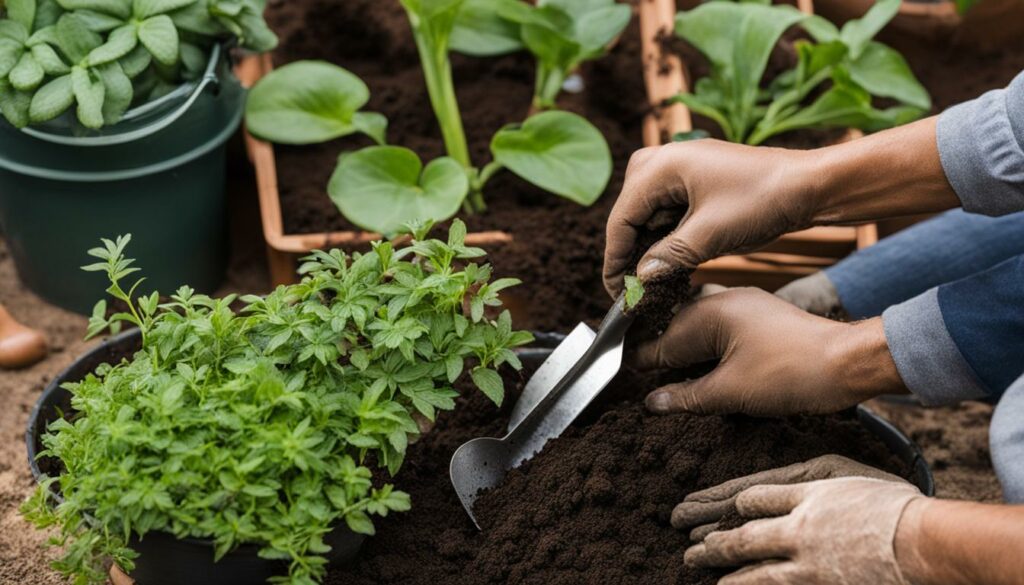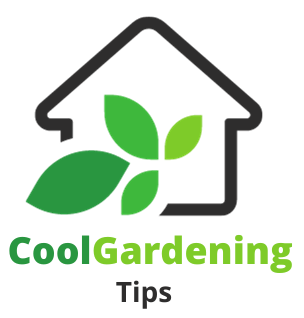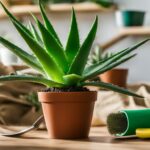Welcome to our foliage care guide, where we’ll provide you with valuable tips and tricks for taking care of your indoor plants. Whether you’re a seasoned plant parent or just starting your gardening journey, this guide will help you ensure that your plants thrive and flourish.
Indoor plant care requires attention to detail and understanding of their specific needs. From watering and fertilizing to creating the ideal environment, we’ll cover it all. By the end of this guide, you’ll be equipped with the knowledge to provide the best care for your houseplants.
With our comprehensive plant care tips, you’ll learn how to meet the needs of different plants, allowing them to thrive in your home. Let’s dive in and discover the secrets to successful plant care!
Tips for Watering and Fertilizing Your Plants
Proper watering and fertilizer application are crucial for the health and well-being of your indoor plants. Follow these tips to ensure your plants receive the right amount of water and nutrients:
1. Watering Guide:
Each plant has different water requirements, so it’s essential to understand the specific needs of your plants. Overwatering can lead to root rot, while underwatering can cause dehydration and wilting. Here’s a general watering guide to help you:
- Check the moisture level of the soil by inserting your finger about an inch deep. If it feels dry, it’s time to water.
- Water thoroughly until you see water draining from the bottom of the pot.
- Avoid letting your plants sit in standing water, as it can lead to root issues.
- Adjust the watering frequency based on the season, humidity levels, and plant type. Some plants may require more water during hotter months or when placed in areas with low humidity.
2. Fertilizer Schedule:
Plants require essential nutrients to grow and thrive. Fertilizers provide these nutrients, but it’s important to use them correctly to avoid damage to your plants:
- Choose a fertilizer specifically formulated for indoor plants and follow the instructions on the packaging.
- Fertilize during the plant’s active growing season, typically in spring and summer.
- Avoid over-fertilizing, as it can lead to salt build-up in the soil, causing damage to the plant’s roots.
- Periodically flush the soil with water to remove any accumulated salts.
- Consider using organic fertilizers for a more environmentally friendly approach.
Remember, each plant is unique, so it’s crucial to observe and understand the individual needs of your indoor plants. By providing the right amount of water and nutrients, you’ll promote healthy growth and ensure your plants thrive.
Creating the Ideal Environment for Your Plants
When it comes to caring for indoor plants, providing the ideal environment is crucial for their health and growth. This includes considering their lighting requirements, humidity needs, pest control, and regular pruning. By paying attention to these factors, you can ensure that your plants thrive and flourish.
Lighting Requirements
Proper lighting is essential for the well-being of your plants. Different plants have varying lighting requirements, so it’s important to understand the needs of each species. Some plants thrive in bright, direct sunlight, while others prefer indirect or low light conditions. Place your plants accordingly, making sure they receive the appropriate amount of light for optimal growth. If natural light is limited, consider using artificial grow lights to supplement their lighting needs.
Humidity Needs
Indoor environments often tend to be drier than what many plant species require. To create the ideal humidity level for your plants, you can mist them regularly or use a humidifier. Grouping plants together can also help create a microclimate with higher humidity levels. Additionally, placing a tray filled with water near your plants allows for natural evaporation, increasing the moisture in the air. By providing adequate humidity, you can prevent your plants from drying out and ensure they thrive.
Pest Control and Pruning
Regular pest control measures are necessary to keep your plants healthy and pest-free. Inspect your plants regularly for any signs of pests, such as aphids or spider mites. If you notice any infestations, treat them promptly with appropriate methods, such as organic insecticides or natural remedies like neem oil. Additionally, pruning your plants helps maintain their shape, encourages new growth, and eliminates any diseased or damaged parts. Use clean and sharp pruning tools to make clean cuts and promote the overall health of your plants.
| Plant Lighting Requirements | Plant Humidity Needs | Plant Pest Control | Pruning Plants |
|---|---|---|---|
| Varies for each plant species. Some require bright, direct sunlight, while others thrive in indirect or low light conditions. | Indoor environments are often drier than what many plants require. Increase humidity levels by misting, using a humidifier, or placing a tray filled with water nearby. | Regularly inspect plants for pests and treat infestations promptly using appropriate methods. Consider organic insecticides or natural remedies like neem oil. | Pruning helps shape plants, encourage new growth, and remove diseased or damaged parts. Use sharp and clean pruning tools to make clean cuts. |
Tips for Buying and Repotting Plants
When it comes to buying plants, it’s important to make informed decisions to ensure you bring home healthy and thriving foliage. Follow these plant shopping tips to make the best choices for your indoor garden:
- Research before you go: Before heading to the nursery or plant store, do some research on the types of plants you’re interested in. Understand their care requirements, such as lighting, watering, and humidity levels, so you can select plants that will thrive in your home.
- Inspect the plants: Take a close look at the plants you’re considering buying. Check for any signs of pests or disease, such as yellowing leaves, spots, or webs. Inspect the roots as well, making sure they are firm and not overly tangled. Avoid plants with any signs of distress or poor health.
- Choose the right pot: If you’re buying a plant that needs to be repotted, consider the size and material of the pot. Ensure it has proper drainage holes to prevent waterlogging. Opt for a pot that allows room for the plant to grow and develop its roots.
Quote: “Buying healthy plants from reputable sources is the first step in ensuring successful indoor gardening.” – Plant Enthusiast Magazine
Once you’ve brought your new plants home, repotting may be necessary, especially if they have outgrown their current containers or have been planted in unsuitable soil. Follow these repotting tips to give your plants the space and nutrients they need:
- Choose the right time: The best time to repot plants is during their active growth period, typically in the spring. Avoid repotting during flowering or dormant stages, as it can cause stress to the plant.
- Select the appropriate soil: Use a well-draining potting mix that is suitable for the type of plant you’re repotting. Different plants have different soil preferences, so research their specific needs beforehand.
- Gently remove the plant: Carefully remove the plant from its current pot, gently loosening the roots if they are tightly packed. Be cautious not to damage the roots during this process.
- Repot and water: Place the plant in its new pot, ensuring it is centered and at the appropriate depth. Fill in the remaining space with fresh potting mix, gently firming it around the roots. Give the plant a thorough watering to help settle the soil.
By following these tips for buying and repotting plants, you can set your indoor foliage up for success. Remember to provide them with the right care and attention they need to thrive in their new environment.
| Table: Common Mistakes to Avoid When Buying and Repotting Plants | Impact |
|---|---|
| Skipping research | May end up with plants that don’t suit your home or are difficult to care for |
| Ignoring signs of distress | Bringing home sick or pest-infested plants, leading to problems for your entire indoor garden |
| Choosing the wrong pot | Plants may become root-bound or suffer from poor drainage, affecting their health |
| Repotting at the wrong time | Can cause stress and shock to the plant, hindering growth and development |
| Using incorrect soil | Plants may struggle to establish in unsuitable soil, leading to nutrient deficiencies or root rot |
| Damaging roots during repotting | Roots are essential for a plant’s health and wellbeing, so care should be taken to avoid damage |

Conclusion
Taking care of your plants is easier than you think. By following these foliage care tips, you can ensure that your indoor plants thrive and bring beauty to your space.
Remember, indoor plant care starts with understanding their needs. Provide the right lighting conditions, whether it’s bright direct light or gentle indirect light, to keep your plants happy. Regularly check the soil moisture before watering, giving your plants the right amount of water at the right time.
Don’t forget about humidity! Many houseplants appreciate a bit of extra moisture in the air. Consider using a humidifier or placing a tray of water near your plants to create a more humid environment.
Lastly, keep an eye out for pests and trim your plants when needed. Regularly check the leaves and stems for any signs of infestation, and if necessary, use organic pest control methods to protect your plants. Pruning can help promote healthy growth and maintain the shape of your foliage beauties.
With a little bit of love and attention, your indoor plants will flourish. So, grab your watering can, adjust the lighting, and create a nurturing environment for your foliage friends. Happy indoor gardening!
FAQ
How often should I water my indoor plants?
The frequency of watering depends on factors such as the plant species, size of the pot, and environmental conditions. As a general rule, water your plants when the top inch of soil feels dry. Avoid overwatering, as it can lead to root rot.
How do I know if my plants need fertilizer?
Look out for signs of nutrient deficiency, such as yellowing leaves or slow growth. Fertilize your plants during the growing season with a balanced houseplant fertilizer according to the package instructions. Remember to follow the recommended dosage to avoid overfeeding.
What kind of lighting do indoor plants need?
Most indoor plants thrive in bright, indirect light. However, different plants have varying lighting requirements. Research the specific needs of your plants and place them accordingly. Consider using grow lights if you have limited natural light.
How can I control humidity levels for my plants?
Some plants, like tropical ones, thrive in higher humidity levels. You can increase humidity by placing a tray filled with water near your plants or using a humidifier. Misting the leaves occasionally can also help. Monitor the humidity levels with a hygrometer.
How can I prevent pests from infesting my plants?
Regularly inspect your plants for signs of pests, such as webs or tiny insects. If you spot any, isolate the affected plant and treat it with an appropriate pesticide or natural remedy. Keeping your plants clean and providing good air circulation can help prevent infestations.
When should I repot my plants?
Repot your plants when they become root-bound, meaning the roots have filled the current pot. Signs of root-bound plants include roots growing out of the drainage holes or the plant becoming top-heavy. Repot during the growing season using fresh soil and a slightly larger pot.





